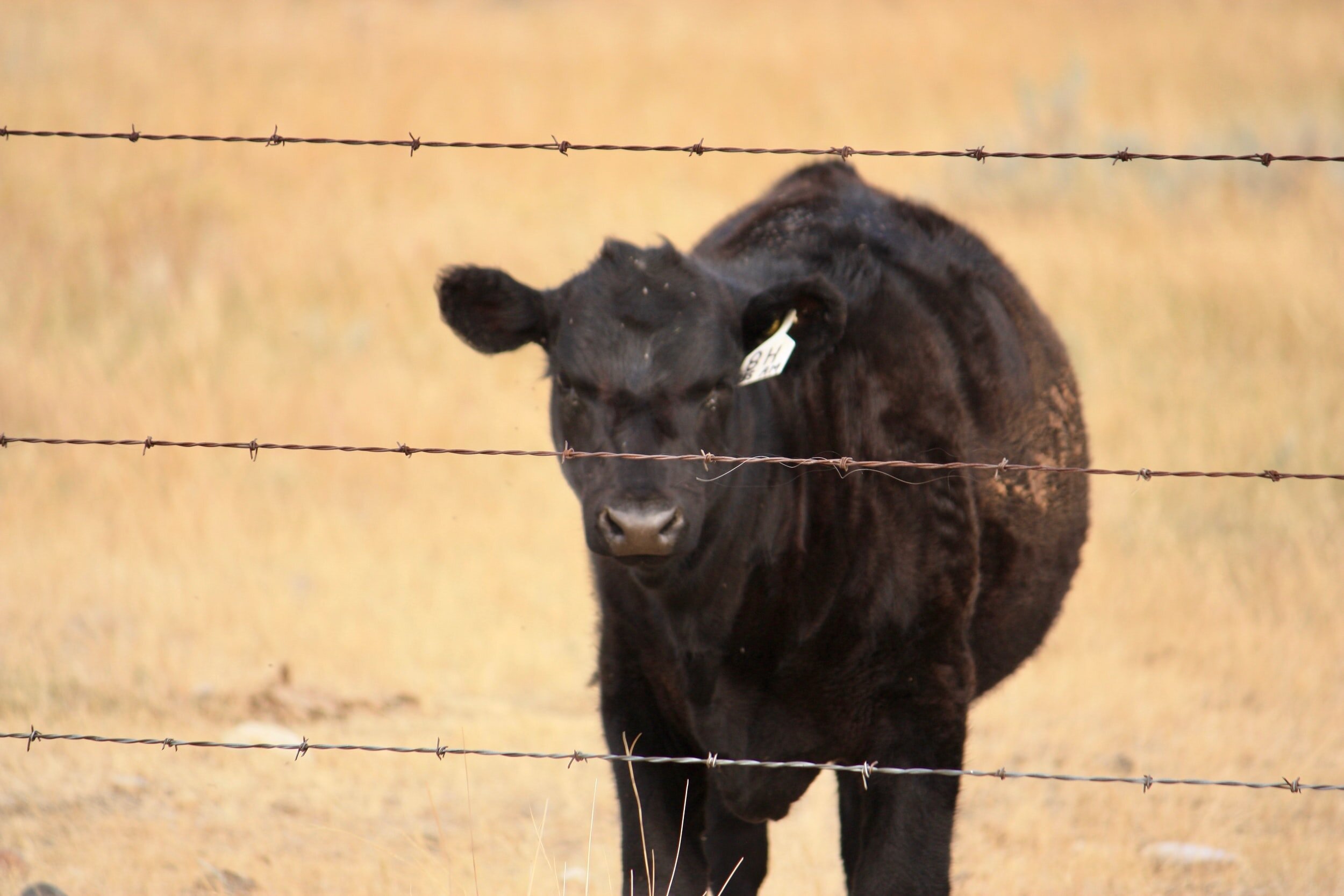Congresswoman Letlow Hires Zellie Duvall, Daughter of AFBF President, as Agriculture Advisor
Congresswoman Julia Letlow announced the addition of Zellie Duvall to her staff as legislative assistant over agriculture.
Duvall, the daughter of American Farm Bureau President Zippy Duvall and native of Greensboro, Ga., grew up on a farm that has been in her family for generations. She received a Bachelor of Science in agriculture, with an emphasis in agricultural communication.
Read More
Conservation Advances Must Do No Harm
The American Farm Bureau Federation calls on the administration to act responsibly in conservation efforts. Specifically, President Biden’s goal to conserve at least 30% of our lands and waters by 2030, commonly referred to as “30x30,” is raising questions. Three key requests are outlined in a letter to President Biden: that the administration provide clarity on the initiative; that the effort recognizes voluntary conservation efforts already underway; and that the administration seeks input from farmers and ranchers.
Read More
Farm Bureau Supports New Growing Climate Solutions Act
American Farm Bureau Federation President Zippy Duvall commented today on the re-introduction of the Growing Climate Solutions Act.
“AFBF welcomes the introduction of the Growing Climate Solutions Act, which builds on the strong foundation of environmental stewardship in American agriculture by providing more clarity and guidance for farmers and ranchers as they explore or expand participation in carbon markets.
Read More
Rural Infrastructure Doesn’t Make the Grade
Living in rural America is a blessing. Many of us can sit on our porches and look out over beautiful fields, forests, hills and prairies. We live in beautiful and historic small towns where we support local businesses. And connecting us all are the roads and bridges we travel as we start busy days tending to livestock, nurturing our crops, attending our children’s or grandchildren’s sporting events and visiting friends and family. Trucks and trains filled with the fruits of farmers’ and ranchers’ hard work crisscross the landscape as barges move up and down rivers.
But the networks we rely on for all of this are in a severe state of disrepair.
Read More
Farm Bureau Supports Challenge of California’s Prop 12
Farm Bureau applauds the state of Montana for filing an amicus curiae with the U.S. Supreme Court supporting the petition filed by the North American Meat Institute (NAMI) challenging the constitutionality of California’s Proposition 12.
The brief was filed by Indiana, joined by Alabama, Alaska, Arkansas, Georgia, Iowa, Kansas, Louisiana, Missouri, Montana, Nebraska, North Dakota, Ohio, Oklahoma, South Carolina, South Dakota, Texas, Utah, West Virginia and Wyoming.
Read More
Stepping on Stepped-up Basis Has Big Consequences
Any change in capital gains tax policy that eliminates or scales back stepped-up basis could result in a massive tax burden on the agricultural sector according to new analysis by the American Soybean Association and the American Farm Bureau Federation.
To minimize the impact of burdensome capital gains taxes, farmers and ranchers use stepped-up basis, which provides a reset for the asset value basis during intergenerational transfers. The magnitude of the tax burden that would be felt if basis is taken away or reduced would likely significantly exceed the annual income generated by the assets, something that has soy and other American farmers concerned.
Read More
How Farmers are Helping Food Banks Feed America
My father spent 30 years in the rice business and I remember driving a “bank out” wagon to transport the grain before I ever drove a car. From those rural roots I came to appreciate that farmers are the foundation of our nation’s food system, providing the nourishing foods we all need to lead healthy, happy lives. Farmers — through advocacy, fundraising and more — are also critical partners in our nation’s fight against hunger, especially now, during the COVID-19 pandemic.
Read More
Chicken and Pork in Cold Storage Lead to Lower Overall Levels of Meat and Poultry
USDA’s latest Cold Storage Report, released Monday, shows animal protein levels are still impacted by COVID-19. The monthly report, provided by USDA’s National Agricultural Statistics Service, shows the end-of-month volume of commodities in freezer storage throughout the U.S. An important market-moving report, it covers most commodities that require cold transport, ranging from nuts, to fruits and vegetables, to dairy and meat.
Read More
#StillFarming Highlights Farmers’ and Ranchers’ Commitment to Safe, Affordable Food
Launched last March to assure consumers that farmers and ranchers take very seriously their commitment to fill grocery store shelves with safe, affordable food, #StillFarming has reached more than 100 million people in all 50 states and more than 90 countries.
Whether they were prepping the soil for spring planting, tending to newly sprouted crops, harvesting those crops at just the right time, feeding and milking their dairy cows or looking after their cattle, chickens and pigs, farmers and ranchers carried on, day-in and day-out, while much of the world came to a standstill.
Read More
Where Would We be Without Agriculture?
Where would we be without agriculture? Some would say naked and hungry. While that may be true for a time, I say eventually we as a society would be no more. Think about it. You can only be hungry for so long and then with no food being grown, what happens?
Switching topics for a minute…let’s say it’s your birthday. Why is this day any more important than the other 364 days? It’s not, but it is a day set apart to remember the value of you. We take this opportunity to celebrate you, how you have impacted our lives and what you have gone through the past 364 days. It also gives you that same opportunity and provides you with the chance to see your impact through others’ eyes. That is the precise reason we celebrate National Ag Day every year in March.
Read More
Farm Bureau Farm Dog of the Year Nominations Now Open
Farmers are invited to submit nominations for the 2022 Farm Bureau Farm Dog of the Year contest, supported by Purina. This is the fourth year of the contest, which celebrates farm dogs and the many ways they support farmers and ranchers in producing nutritious food for families and their pets across America.
The grand prize winner – Farm Bureau Farm Dog of the Year – will win a year’s worth of Purina dog food and $5,000 in prize money. The winner will be recognized at a Farm Dog of the Year award ceremony at the American Farm Bureau Federation Convention in January 2022. Up to four regional runners-up* will each win $1,000 in prize money.
Read More
March 15 Deadline Approaching for 2021 ARC and PLC Enrollment
March 15 is the deadline to enroll in the Price Loss Coverage (PLC) or Agriculture Risk Coverage (ARC) programs for 2021. Program enrollment, which farmers can do on a commodity-by-commodity basis, is required to participate in the programs this year. ARC and PLC are Title I commodity safety net programs established in the 2018 farm bill. For the 2021/22 crop year, farmers can change their coverage options from what they selected in 2019 for each of the commodities and base acres enrolled.
Read More
AFBF Applauds Introduction of Estate Tax Repeal Bills
The American Farm Bureau Federation is calling on Congress to remove barriers to farm ownership. Bills aimed at eliminating the estate tax were introduced in the Senate and House Tuesday. Both are supported by the American Farm Bureau Federation.
Read More
Sustainability Markets, Part 2: Common Land-Use Practices Under Consideration for Conservation Adoption
This Market Intel article is the second in a five-part series highlighting agricultural ecosystem credit markets and the opportunities and challenges they present farmers, as well as the policy levers and many other factors involved. The first article, Sustainability Markets, Part 1: Agricultural Ecosystem Credit Markets – The Primer, provided a primer on agricultural ecosystem credit markets, how the markets are developing and operating and who is behind them and why.
Read More
Sustainability Markets, Part 1: Agricultural Ecosystem Credit Markets – The Primer
This Market Intel article is the first in a five-part series highlighting agricultural ecosystem credit markets and the opportunities and challenges they present farmers, as well as the policy levers and many other factors involved.
This article provides a primer on agriculture ecosystem credit markets. With so many emerging ideas and platforms, it’s important to explore how these markets are developing and operating, as well as who is behind them and why.
Read More















